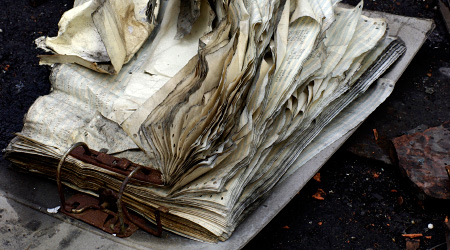Credit Repair: Dealing With Old Accounts

When a consumer receives a copy of their credit report for the first time, they may come across a number of different items with which they are unfamiliar. It is common to see a large list of credit cards they may not have used for years and may be wondering why they are showing up on their credit report. Dealing with old accounts, while not the most important aspect of a credit report, should still be a priority because it affects the credit score and how lenders perceive you as a borrower.
There are three types of old accounts which are credit cards with no balances which the consumer has long since forgotten about, inaccurate or unexpected accounts with small balances and outstanding excessive debt which they were aware of but haven't paid. Depending on the account status, ongoing damage may be occurring from these various types of old accounts. Regardless of the situation, old accounts should be dealt with so that there is some sort of resolution which benefits all parties. This may mean paying off balances or calling lenders or simply waiting until the old accounts to fall off the credit report.
The best case scenario is seeing a number of old credit card accounts with zero balances which are still considered active. It is recommended for consumers to only have 2 to 3 active credit card accounts since any more will create a red flag for potential lenders. Total available credit and the debt utilization ratio are both affected by the number of active credit card accounts. If you notice a number of credit cards which you haven't used in years with zero balances, call one 800 number and cancel the credit cards. They can be a slight negative to canceling credit cards but that should be offset by the obvious benefits.
The second type of old account, which is less common but still damaging, is outstanding balances which you have no idea why they exist or where they came from. Sometimes it is due to inaccurate information such as another consumer with the same name. Another possibility is an old landlord or business which reported an outstanding amount to the credit bureaus. If the old account is due to inaccurate information, filling out a simple form provided by each of the credit bureaus can often resolve erroneous information. If the amount is small enough, it is recommended to pay off these particular outstanding debts as soon as possible.
The final type of old account is one where the consumer knows it exists, has a large outstanding balance and is either unable or unwilling to pay the debt. These old accounts aren't likely to be resolved anytime soon or to the satisfaction of either party. These normally consist of excessive credit card or medical debt which the consumer has not or will not pay off. Resolution normally comes from partial settlements, charge-offs or lawsuits all of which will damage a credit history for years to come. Even if the account is closed, the outstanding balance will still exist and significant black mark will appear for up to seven years.
Elsewhere on StockMonkeys.com







